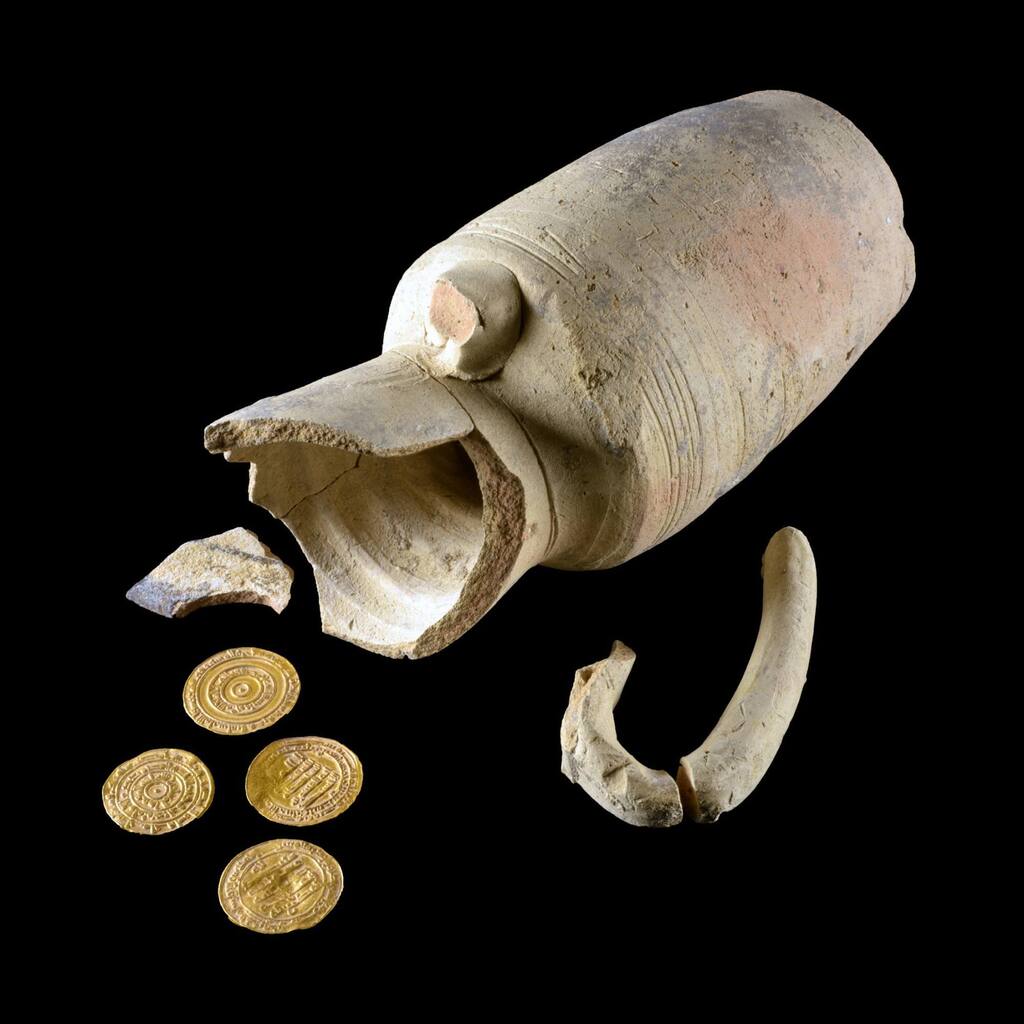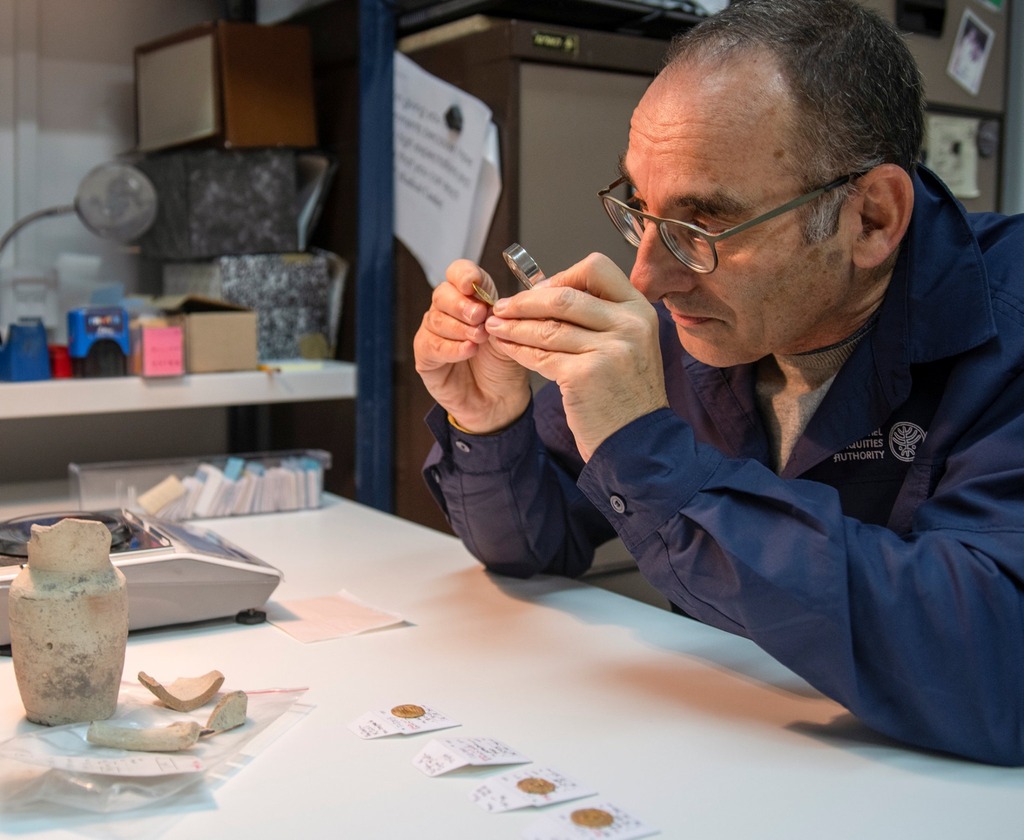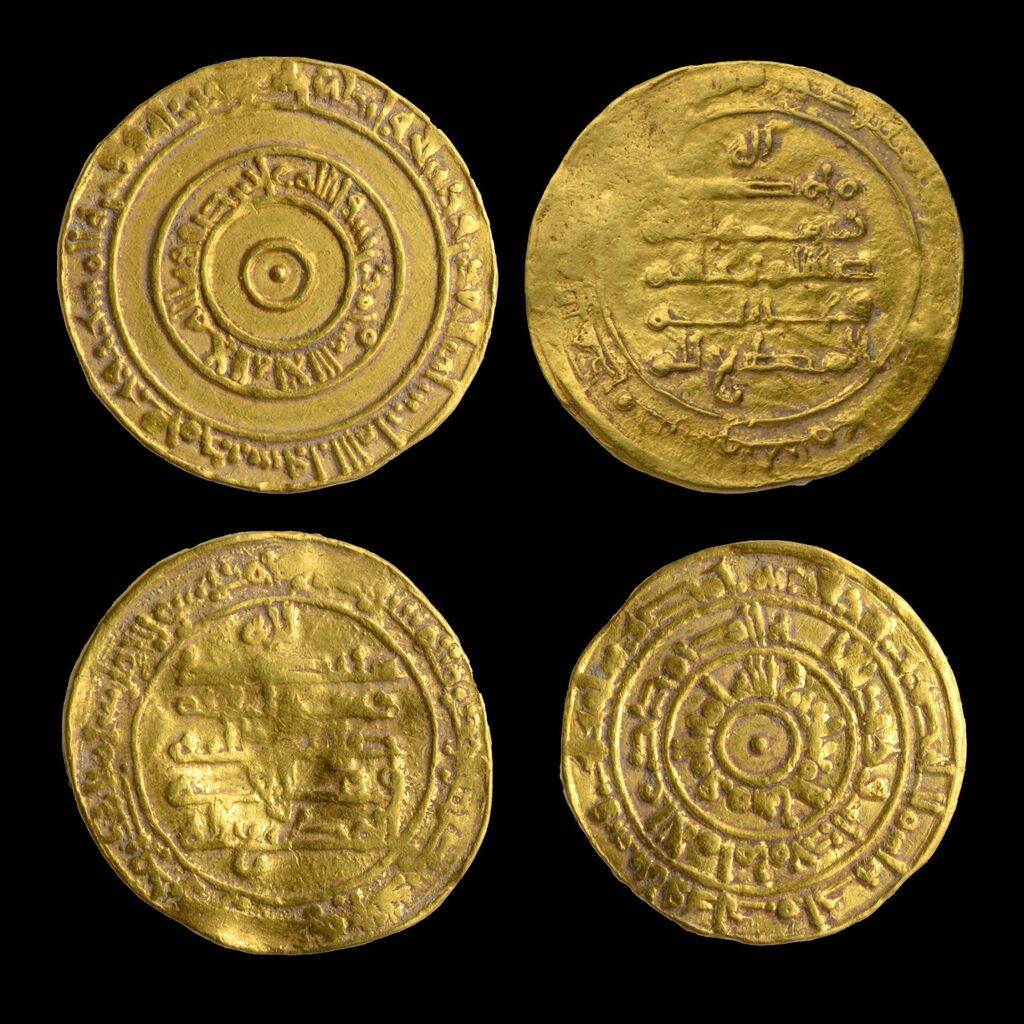A juglet containing four pure gold coins dating from more than a thousand years ago during the Early Islamic period, was unearthed during archaeological excavations conducted by the Israel Antiquities Authority in the old city of Jerusalem.
The coins were discovered during preparations for the construction of an elevator to make the Western Wall Plaza accessible to visitors coming from the Jewish Quarter.
3 View gallery


A juglet discovered in an archeological dig in Jerusalem with gold coins from the early Islamic period
(Photo: IAA)
The juglet was found by IAA inspector Yevgenia Kapil during preliminary digging at the site last month. Some weeks later, as excavation director David Gellman was examining the finds, he emptied the contents of the juglet.
“To my great surprise along with the soil, four shiny gold coins fell into my hand," Gellman said. "This is the first time in my career as an archaeologist that I have discovered gold, and it is tremendously exciting.”
According to IAA's coin expert, Dr. Robert Kool, the coins were in excellent preserved condition and were immediately identifiable even without cleaning.
"The coins date from a relatively brief period, from the late 940s to the 970s CE. This was a time of radical political change," Kool said, "At the time, control over the area passed from the Sunni Abbasid caliphate, whose capital was Baghdad, Iraq, into the hands of its Shiite rivals, the Fatimid dynasty of North Africa, who conquered modern-day Egypt, Syria and Israel in those years."
"The profile of the coins found in the juglet is a near-perfect reflection of the historical events," he said. "Two gold dinars were minted in Ramla during the rule of Caliph al-Muti‛ (946–974 CE) and his regional governor, Abu ‛Ali al-Qasim ibn al-Ihshid Unujur (946–961 CE). The other two gold coins were minted in Cairo by the Fatimid rulers al-Mu‘izz (953–975 CE) and his successor, al-‘Aziz (975–996 CE).”
According to Dr. Kool, the find was the first time in fifty years that a gold cache from the Fatimid period has been discovered in Jerusalem’s Old City. "The last time was in the large-scale excavations directed by Prof. Benjamin Mazar after the Six-Day War, not far from the current discovery, where five coin and jewelry hoards from this period were uncovered south of the Temple Mount.”
3 View gallery


Dr. Robert Kool, IAA coin expert examines a gold coin discovered in an archeological dig in Jerusalem
(Photo: IAA)
“Four dinars was a considerable sum of money for most of the population, who lived under difficult conditions at the time,” Dr. Kool said. “It was equal to the monthly salary of a minor official, or four months’ salary for a common laborer.
Kook explained that compared with those people, the small handful of wealthy officials and merchants in the city earned huge salaries and amassed vast wealth. “A senior treasury official could earn 7,000 gold dinars a month, and also receive additional incomes from his rural estates amounting to hundreds of thousands of gold dinars a year,” he said.
Herzl Ben Ari, director of the Jewish Quarter Development Corporation, who was visiting the excavation site when the coins were exposed, said, that although he was accustomed to archaeological discoveries once in a while, "it is always very exciting to uncover Jerusalem’s unique and turbulent past. Once the elevator project is complete, we intend to allow the public to view large numbers of the archaeological finds," he said.
First published: 22:39, 11.10.20


